Ok, so it’s not really IN my shower. It’s hanging on the curtain rod. When I shower, I move it to the towel bar. Then I move it back when I’m done. I can’t seem to make it live somewhere else.
Why, you ask? Because it looks like this.
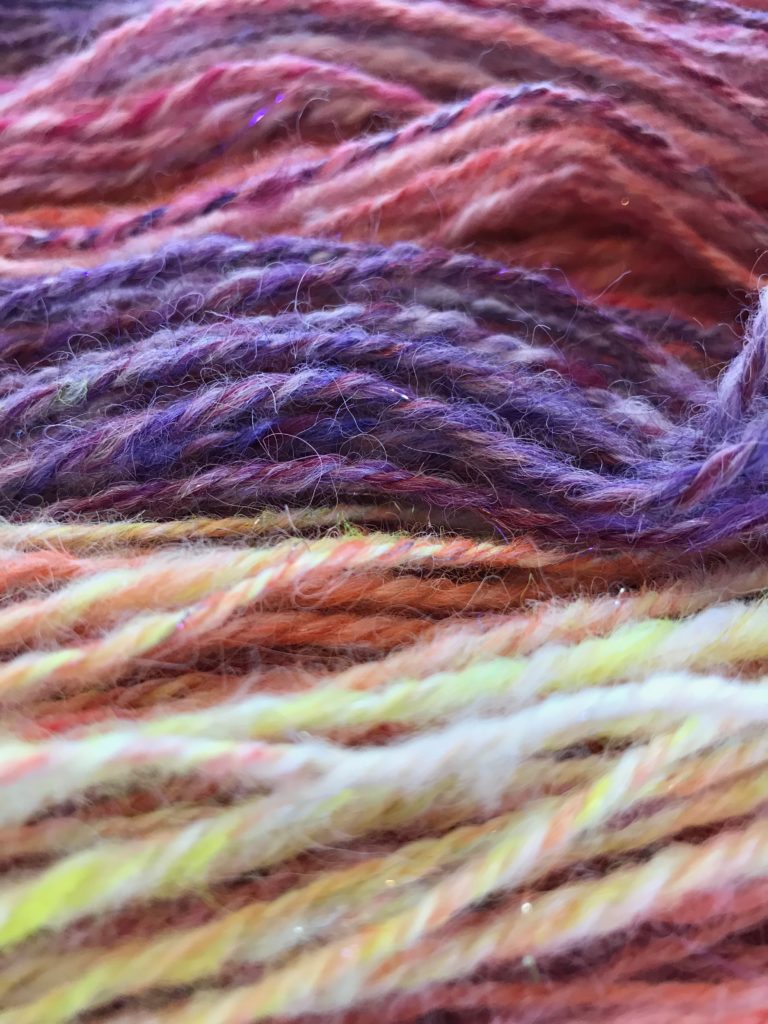
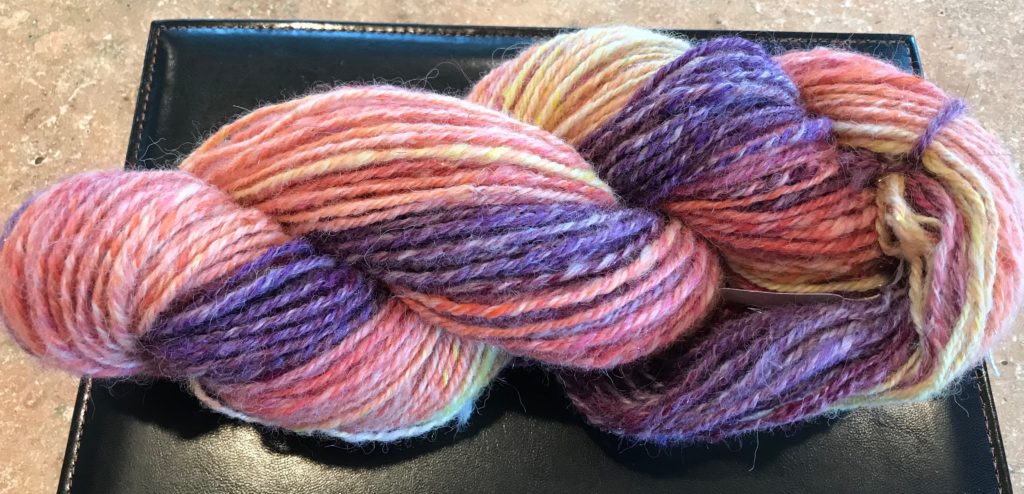
And don’t even get me started on how it FEELS.
This project started with a batt from Calico Farm that I picked up at Okfiberfest last spring – the colorway is Glacier Sunset. Okfiberfest is a newish fiber festival in Omak, Washington – I found it kind of by accident and Randy and I were due for a vacation. We still lived in Bellingham at the time, so a road trip was in order. It’s a small festival but the people are nice and it’s a beautiful place (for this desert-lover, at least). Plus it was actually warm there, which it was not at the time in Bellingham. If you live in Washington or Idaho, I recommend checking it out.
I was a very, very new spinner when I bought this batt – I was drawn to the colors and the subtle sparkle. However, I had no idea what to do with it. I was terrified that I was going to spin it wrong or “wreck it” somehow. I also knew that I wanted to keep the runs of color intact, but had no idea how to do that at the time.
Like many spinners, I learned with roving and have spent a lot of time working with prepared roving and top. I hadn’t really watched anyone work with a batt, and my own experiment with an art batt full of curly locks and blobs of stuff had been…shall we say…not my favorite thing ever. I love a smooth yarn, and that isn’t what art batts are for. So I gave up, shoved the rest of that art batt in my stash, and waited.
Fast forward to Black Sheep Gathering last summer when I was lucky enough to get into Sarah K. Anderson’s Spinning with Color workshop. It was fantastic, and I highly recommend taking a class with her if you can. It was extremely hands on…she provided us with tons of fiber in different colors, and a gazillion samples of various ways they could be combined. It was a great class.
But here’s a secret. The WHOLE reason I wanted to take the class was so that I could figure out what to do with this batt that was hanging around in my stash calling my name.
Enter the chain (or Navajo) plying technique. You can watch Sarah demonstrate it here, but I absolutely needed to see how she did it, and then have her watch me do it, to be able to learn how to do it myself. I practiced a few times after I took the class, but the batt continued to languish in my stash.
It sat there because I was still so unsure. Sometimes I get caught up in the “right” way to do something. In this case it was “batt = woollen preparation = I should spin it woollen but I’m not very comfortable with that technique and I don’t want to do it wrong.”
And that’s where belonging to a spinning guild, or knowing other spinners, or finding an online community is critical to forward movement for me. I was sitting next to my friend Nancy at a Guild meeting and she was spinning rolags with a short forward draw. Woollen preparation. Worsted draft. Mind. BLOWN.
She said something along the lines of “It’s your spinning. Do it the way you want to do it.” So I did.
I LOVED spinning this batt. Unfortunately I didn’t take a photo of it before I started, but these two photos show how I split it up.
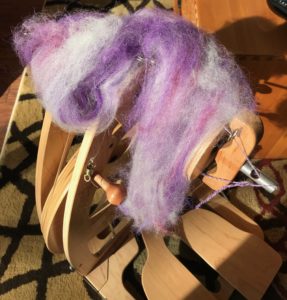
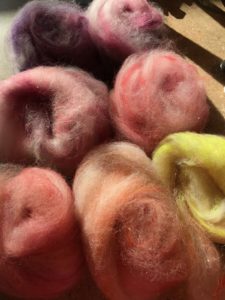
This stunning smooth layered batt was a blend of Alpaca, Pygora, Merino, Angelina, and Firestar. The colors are saturated, but sandwiched between layers of white which brought them all together. There is just enough sparkle to keep it interesting. Some of the dyed sections were a little bumpy, but I was mostly able to smooth them out (and I just let it go when I wasn’t).
I couldn’t stop taking photos of the bobbin…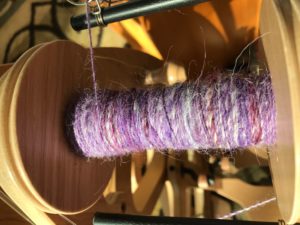
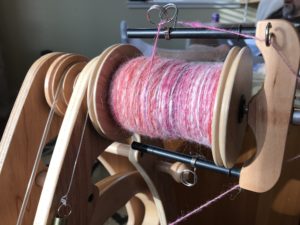
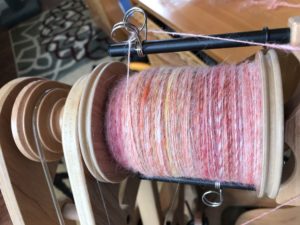
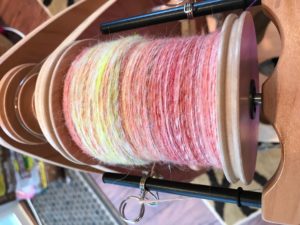
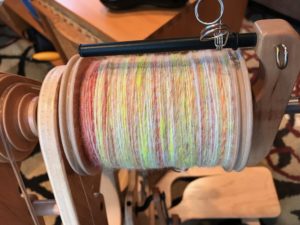
It’s hard to get the sparkle into the pictures, but it’s definitely there. I chain plyed it up, blocked it by soaking in hot water and snapping, and ended up with just about 160 yards of bulky/super bulky Glacier Sunset yarn. It is super-soft and I think it will be drapey if I knit it loosely. And very warm. I tend to be a little itch-sensitive where alpaca is concerned and it has quite a halo, so I’m not quite sure what I want to do with it. Whatever it is, I need to use the entire skein…I don’t want one iota left over!
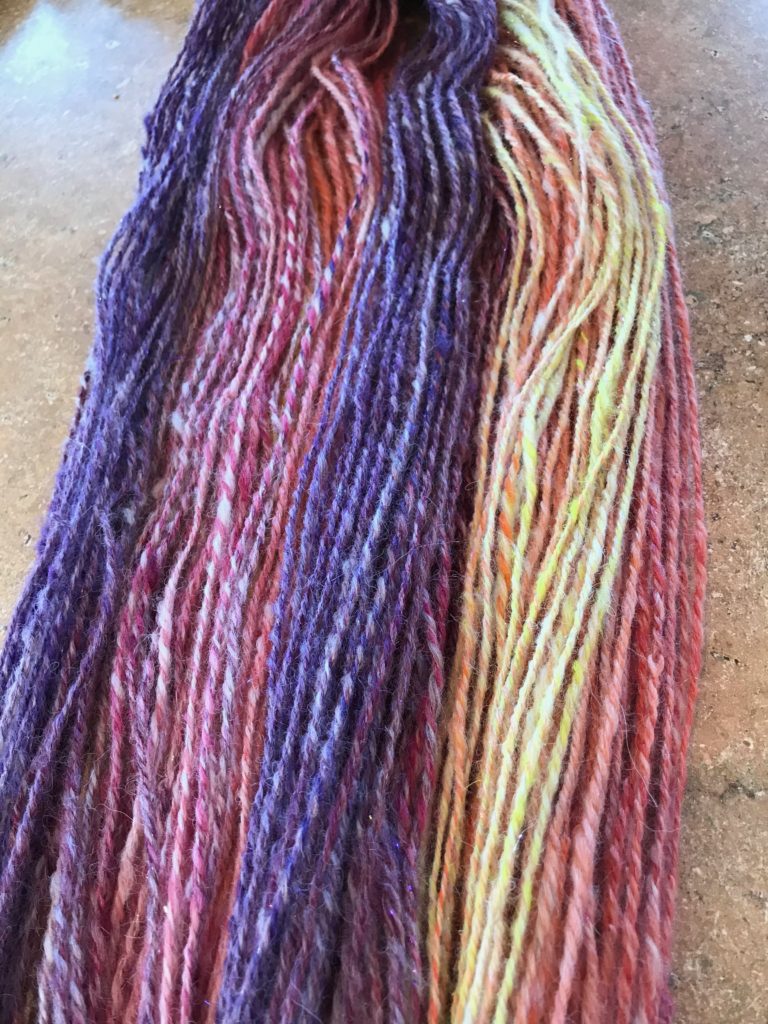
I’m sure one day it will tell me what it wants to be. Until then, it shall remain my pet skein.
And I swear that someday I’ll move it out of the shower.
PS: Do you have a story about a pet skein? I’d love to hear it in the comments!

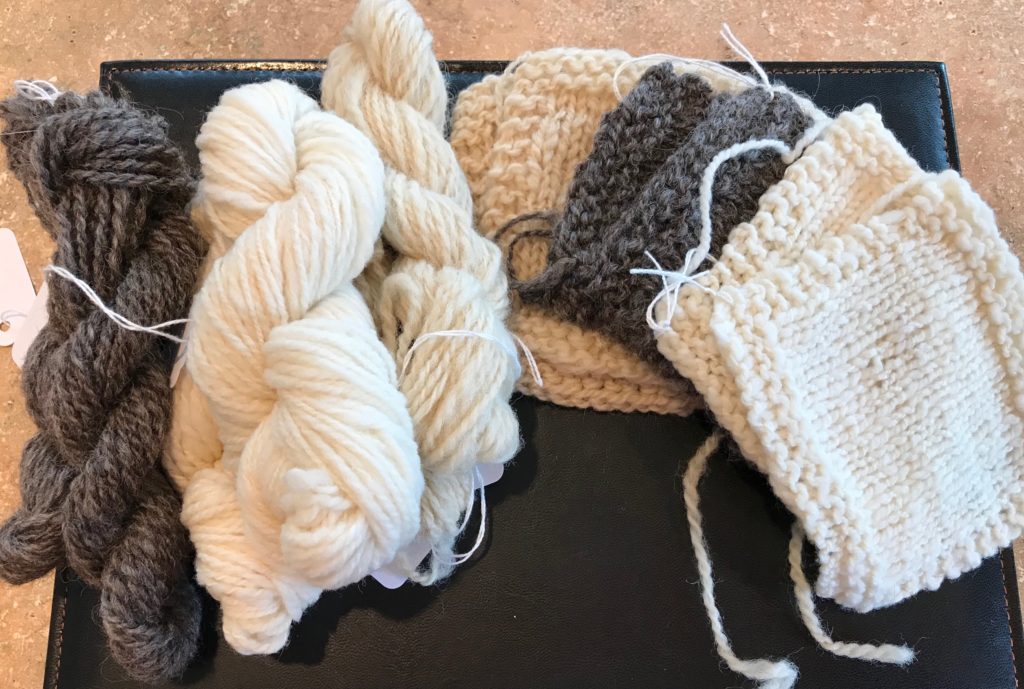
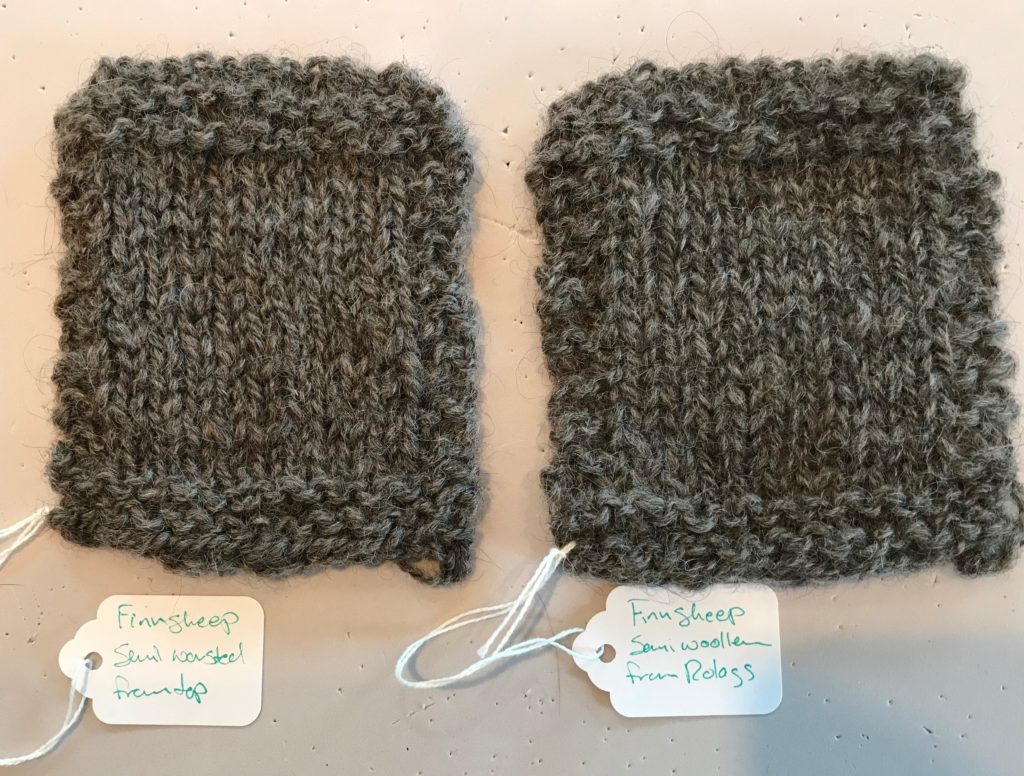
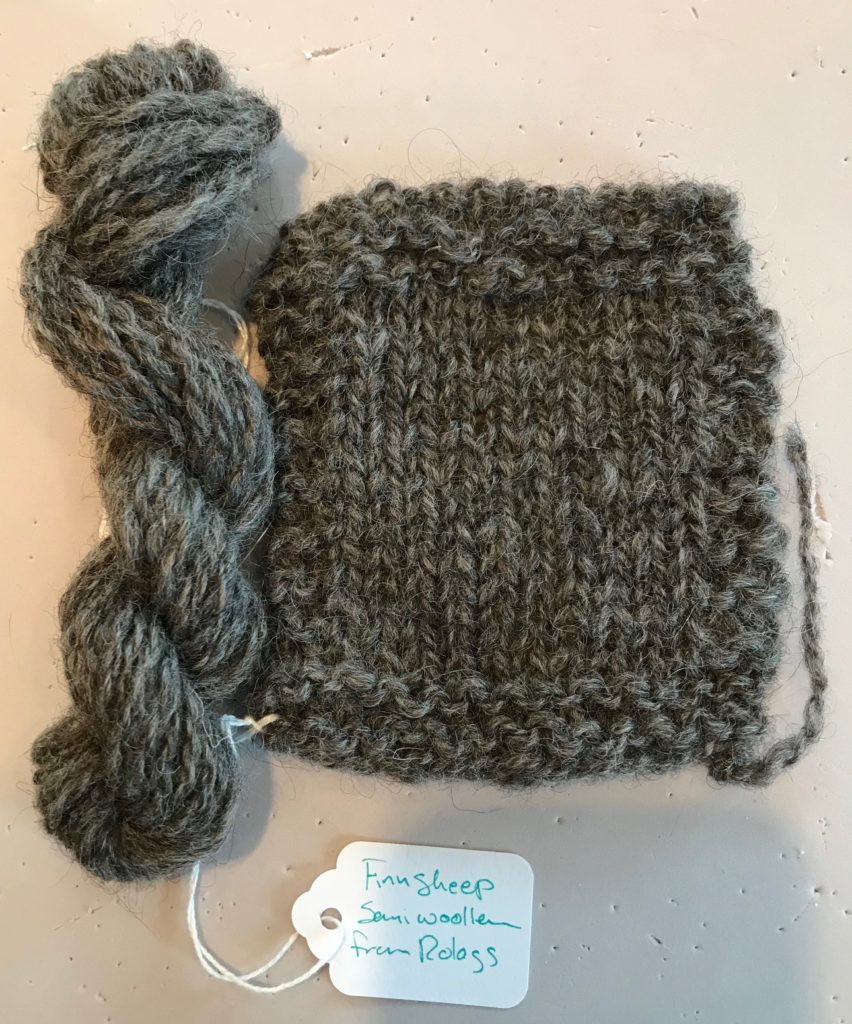
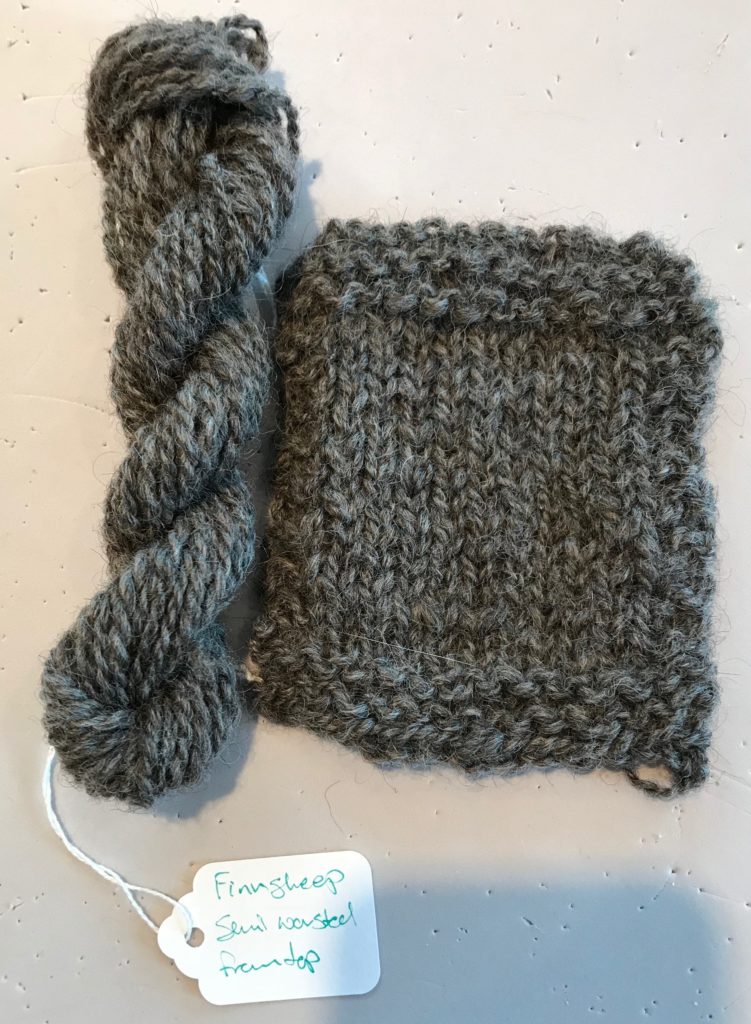
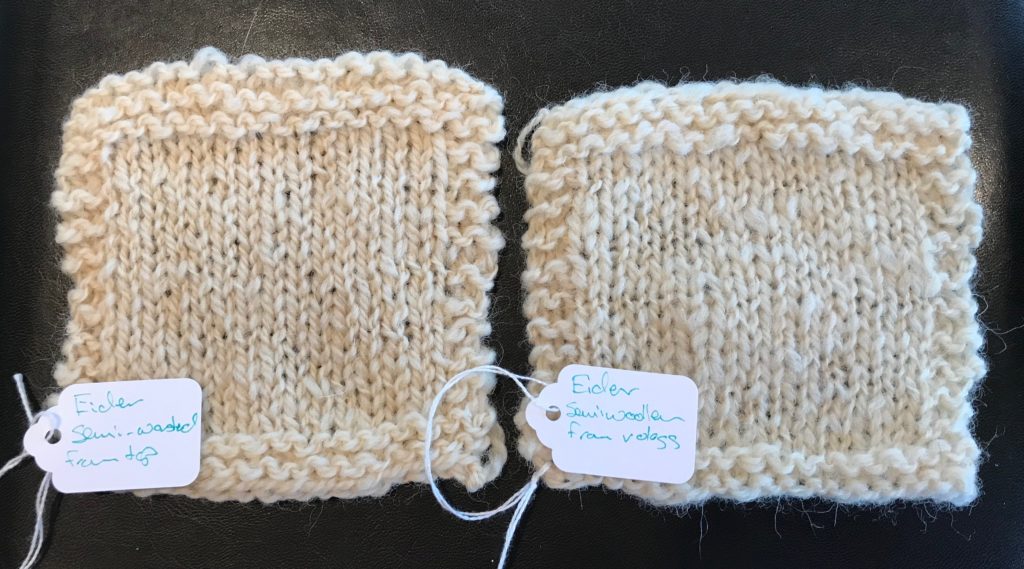 Eider is a German breed and has many other names, including Oldenburg White Head and White-headed Marsh. My personal favorite for sheer unattractiveness is German White-headed Mutton. I’m so glad that someone saw fit to select additional monikers for this lovely sheep. Unfortunately, this breed is not listed in the Fleece and Fiber Sourcebook so I had to take to the internet to learn about it.
Eider is a German breed and has many other names, including Oldenburg White Head and White-headed Marsh. My personal favorite for sheer unattractiveness is German White-headed Mutton. I’m so glad that someone saw fit to select additional monikers for this lovely sheep. Unfortunately, this breed is not listed in the Fleece and Fiber Sourcebook so I had to take to the internet to learn about it.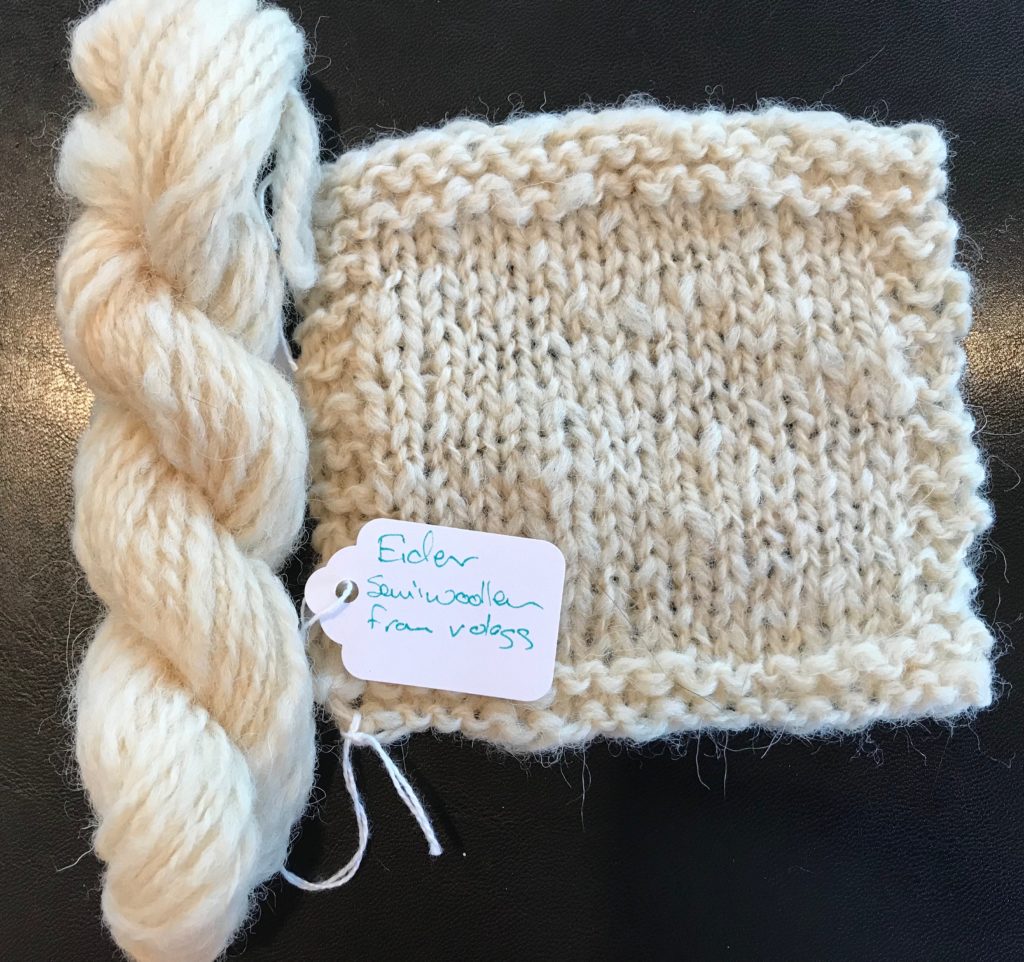
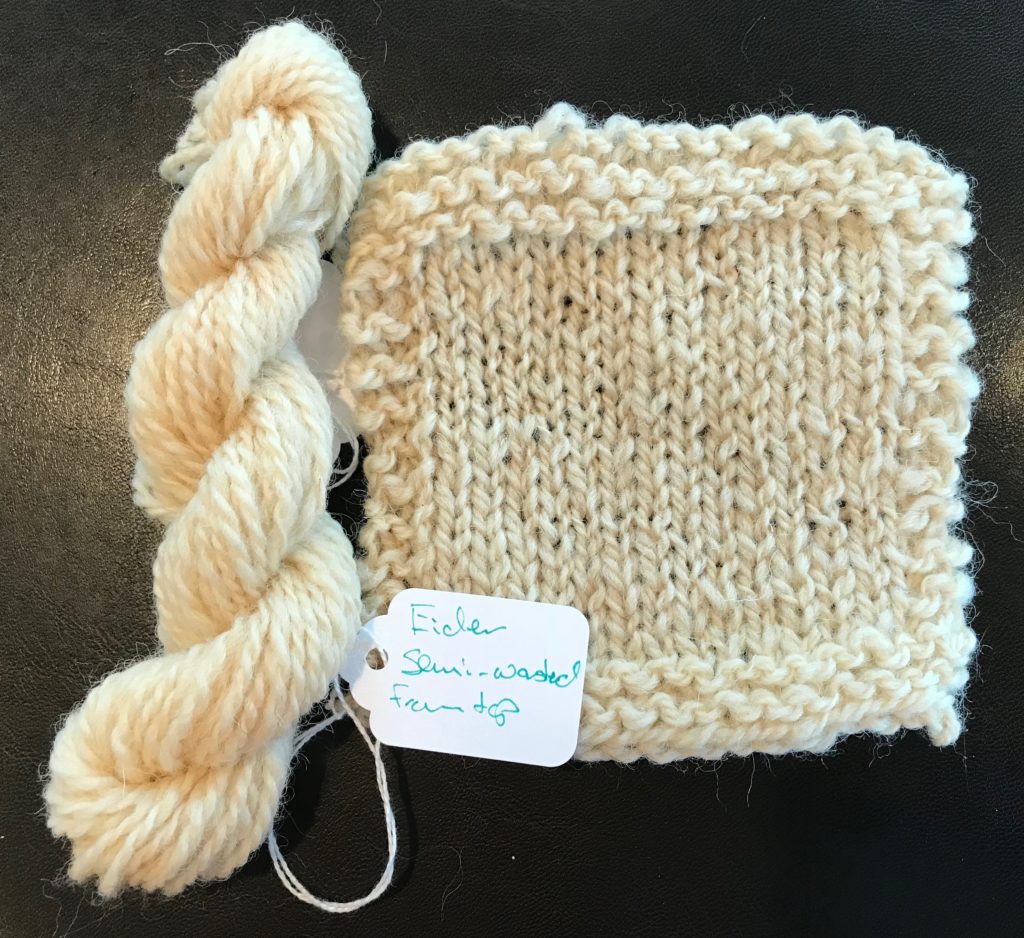 I also found spinning this breed in a semi-worsted style to be very pleasurable. The resulting yarn was lovely to knit as well, and the stitch definition is very nice. Both swatches bloomed a bit with blocking, filling in some of the gaps and creating lovely fabric. Though the semi-worsted swatch is smoother, I suspect that it is still mostly outerwear worthy.
I also found spinning this breed in a semi-worsted style to be very pleasurable. The resulting yarn was lovely to knit as well, and the stitch definition is very nice. Both swatches bloomed a bit with blocking, filling in some of the gaps and creating lovely fabric. Though the semi-worsted swatch is smoother, I suspect that it is still mostly outerwear worthy.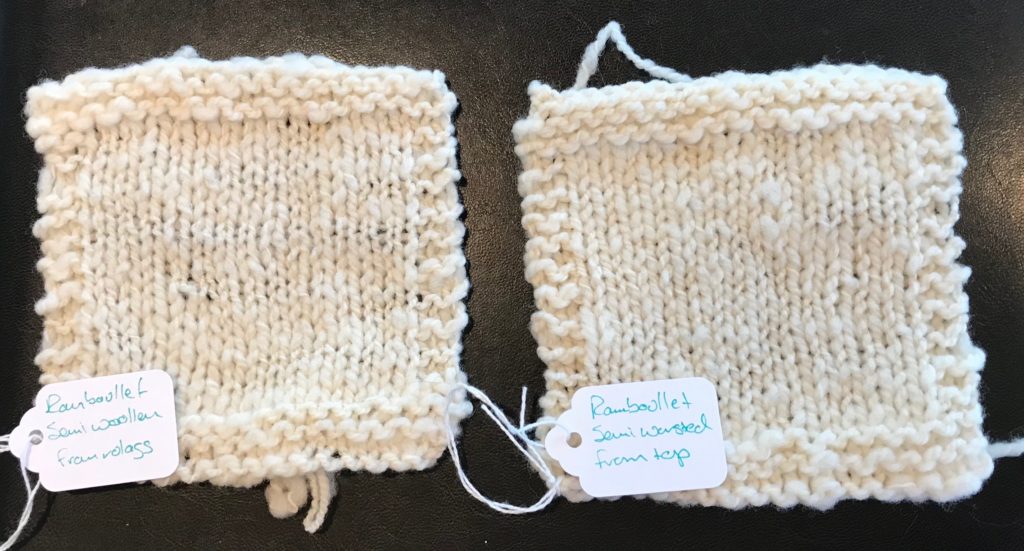 If I had to use one word to describe Rambouillet (ram-boo-yay) fiber, it would be dense. I suspect that is partly because I’ve been working with courser fibers recently, but handling Rambouillet is a little like handling a very nice cotton ball. It isn’t silky but it’s soft as can be. Rambouillets were derived from Spanish Merinos, and are plentiful in the United States and abroad should you want to get your hands on a sample. They also have funny wrinkly faces, which I think are awfully cute.
If I had to use one word to describe Rambouillet (ram-boo-yay) fiber, it would be dense. I suspect that is partly because I’ve been working with courser fibers recently, but handling Rambouillet is a little like handling a very nice cotton ball. It isn’t silky but it’s soft as can be. Rambouillets were derived from Spanish Merinos, and are plentiful in the United States and abroad should you want to get your hands on a sample. They also have funny wrinkly faces, which I think are awfully cute.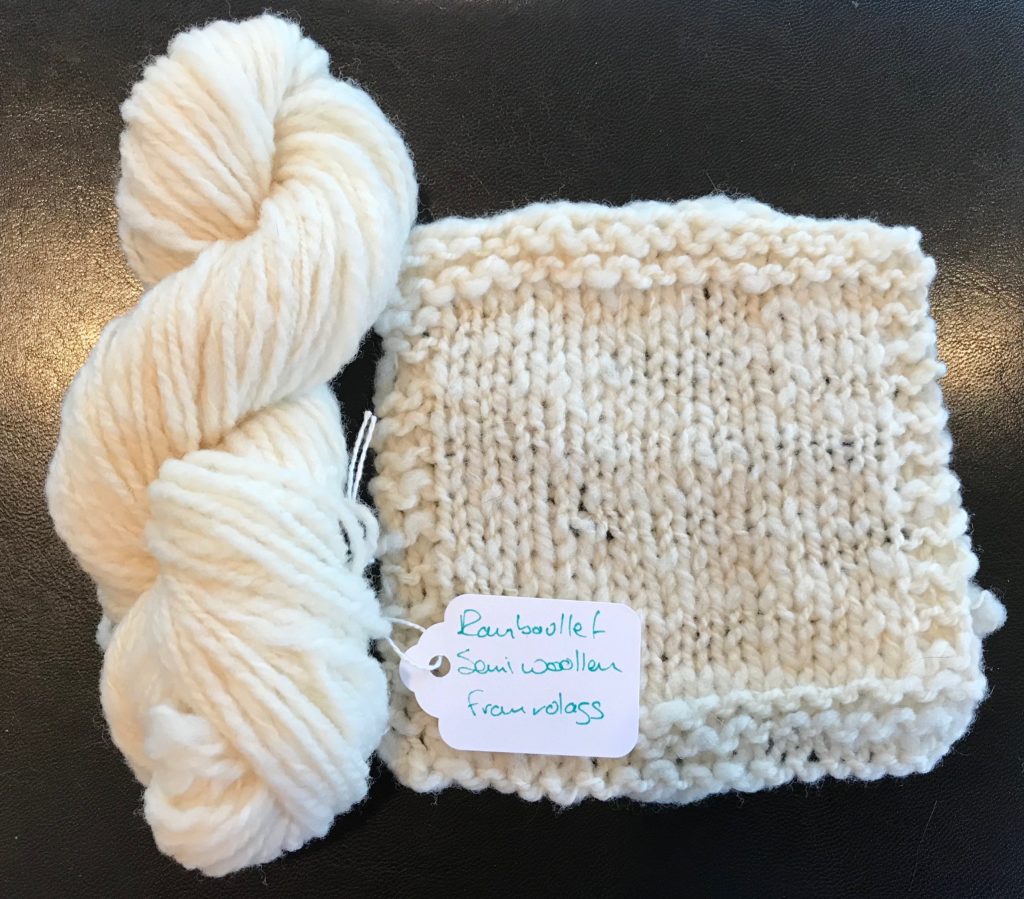 Since this fiber is so soft and the recommendations I read said it is best spun relatively fine, I set the ratio on my wheel to 11:1 for the rolags. Again it took some experimentation to figure out how much twist I needed to put in so the singles didn’t break, and I had some waste while I sorted that out. Once I got it, though, I found Rambouillet to be great to spin using a supported long draw from rolags. The yarn is fluffy, soft, and airy, but the fibers do tend to cling to each other. Rambouillet will felt easily.
Since this fiber is so soft and the recommendations I read said it is best spun relatively fine, I set the ratio on my wheel to 11:1 for the rolags. Again it took some experimentation to figure out how much twist I needed to put in so the singles didn’t break, and I had some waste while I sorted that out. Once I got it, though, I found Rambouillet to be great to spin using a supported long draw from rolags. The yarn is fluffy, soft, and airy, but the fibers do tend to cling to each other. Rambouillet will felt easily.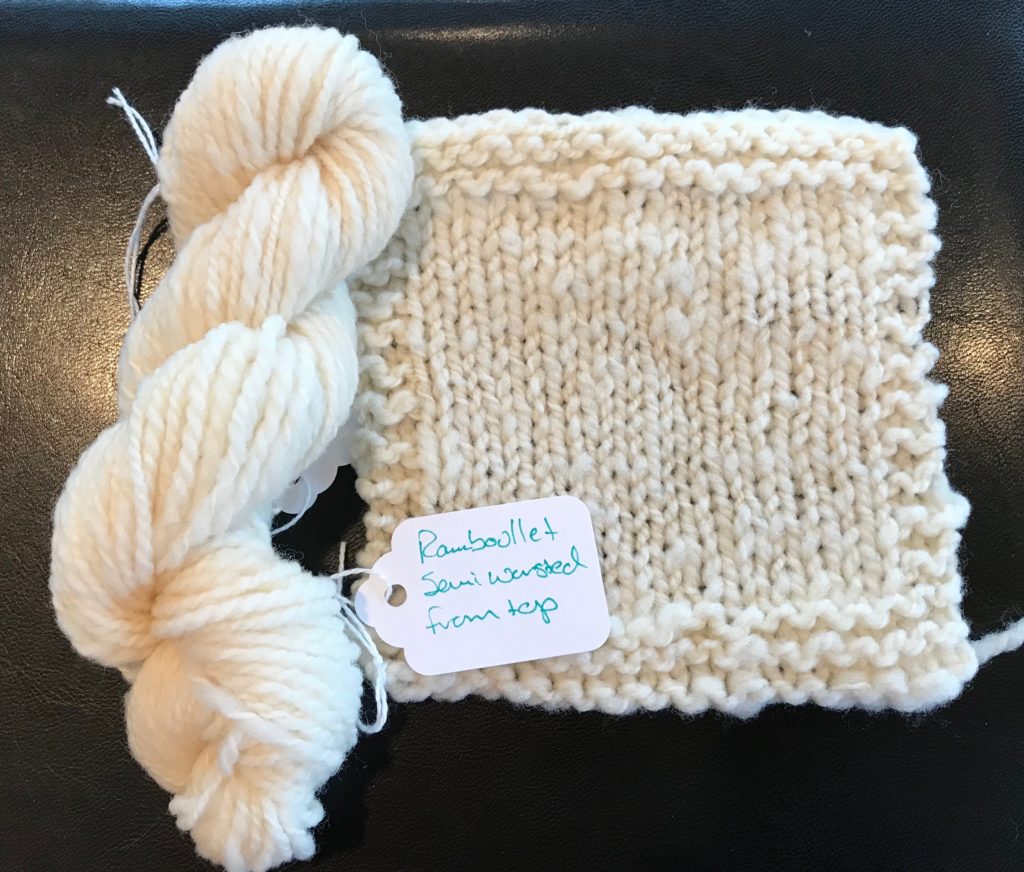 When I switched over to short-forward draw for my semi-worsted sample, I was surprised that I needed to strip my top into multiple pieces in order to handle it easily. The density of the fibers within the top meant that I needed to work with smaller pieces so that I didn’t keep getting too many fibers with each draw. Related to my last post, it is important to note that both my semi-woollen and semi-worsted sample skeins fluffed up A LOT in finishing – I only did the math on my semi-worsted skein, but it went from 54 yards before blocking to 37.5 yards after…this is definitely something I will take into consideration when I work with Rambouillet in the future! Which I will…I love this semi-worsted yarn and swatch. It totally reflects the fiber I started with – dense, soft, and relatively smooth.
When I switched over to short-forward draw for my semi-worsted sample, I was surprised that I needed to strip my top into multiple pieces in order to handle it easily. The density of the fibers within the top meant that I needed to work with smaller pieces so that I didn’t keep getting too many fibers with each draw. Related to my last post, it is important to note that both my semi-woollen and semi-worsted sample skeins fluffed up A LOT in finishing – I only did the math on my semi-worsted skein, but it went from 54 yards before blocking to 37.5 yards after…this is definitely something I will take into consideration when I work with Rambouillet in the future! Which I will…I love this semi-worsted yarn and swatch. It totally reflects the fiber I started with – dense, soft, and relatively smooth.